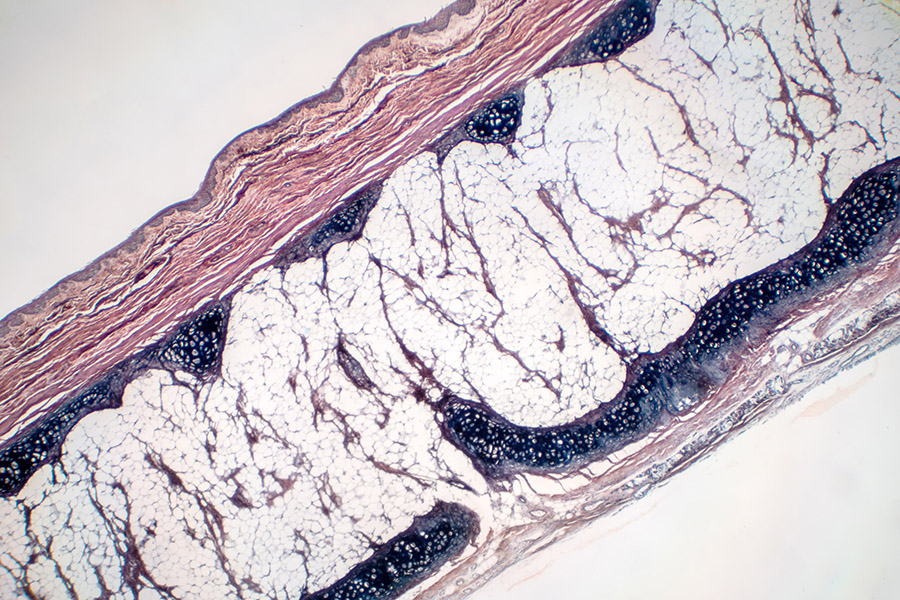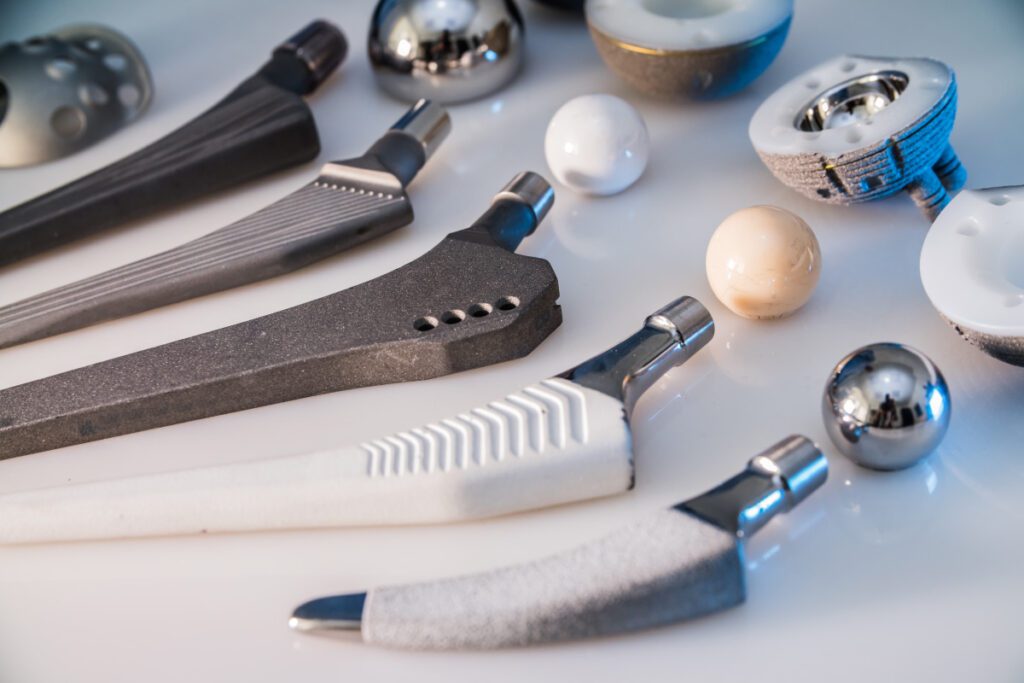Hip implants benefit an enormous amount of people, helping them to reclaim their mobility and prevent further deterioration of their hip joint, halting pain from medical problems affecting their hip. Though a hip implant is essential in hip replacement surgery, which type is best and why are there different kinds of a replacement hip?
To better help patients understand the choice of implant when undergoing hip arthroplasty, read below and learn about the different types of implants (prostheses) available so you can have a conversation with your doctor about the best choices for you, and why.
Types of Hip Replacement Surgery
Before discussing the types of implants used in hip replacement surgery, it’s important to distinguish between the surgery types and the components of a hip implant system, of which there are four:
- The cup
- The head
- The neck
- The stem
In a total hip replacement surgery the head and cup components are implanted to recreate the ball and socket joint of the hip while the stem is fitted into the femur to connect with the head. In a partial hip replacement, only the ball joint is replaced with the head component.
Types of Hip Implants
Medical advancements are one of the chief reasons for the different types of hip replacement options for patients, but now that there are options, factors are used to determine which type of implant is best, such as:
- Age of the patient
- The activity level of the patient
- Surgeon’s preference
- Particular deformities/abnormalities of the hip
Read through each type of hip replacement implant to learn more about the options that may be available to you or are likely to be the best option:
Metal and Plastic Hip Implants
An implant made of metal and plastic is the most common type used in hip replacement surgery. The metal that is most often used is titanium and stainless steel. The ball and the socket of the hip joint are replaced with the metal implant and the plastic (polyethylene) element is a spacer placed in between the implant that replaced the ball and socket. To secure the implant, a surgeon will either press-fit or cement it into place. The former method is where the implant is fitted into the bone so that new bone forms around the implant to better hold it in position and the cement used is a special bone cement to do the same.
Metal on Metal Hip Implants
Using the same type of metal described earlier, the difference between this type of hip replacement implant and the one mentioned before is that there is no plastic spacer used. This type of implant is rarely used, but both the ball and cup components are made of metal and are highly resistant to wear and tear type of damage.
Ceramic Hip Implants
This type of implant is made of a ceramic material only in the ball and the socket. Metal is still used but only within the bone. The ceramic implant is designed to be the most resistant to wear and is more scratch-resistant, and smoother than other types of implants used in hip replacement surgery.
Which Hip Implants Are Best For You?
The type of hip replacement implant that is best depends on several factors and what your surgeon thinks would be best for your health. Knowing the background of each implant type can help you engage in the conversation better, and ask questions about the risks and benefits of each which will help you meet your mobility and overall health goals as well.
We at Proliance Surgeons Everett Bone & Joint are dedicated to treating hip injuries and conditions, ensuring our patients have the knowledge to participate in the medical process. By delivering the highest quality of care and expertise, we better the community and keep our neighbors in good health for as long as they can and help them with a shorter recovery time. If you are concerned that hip replacement surgeries may be needed, don’t hesitate to contact us using the button below.

























